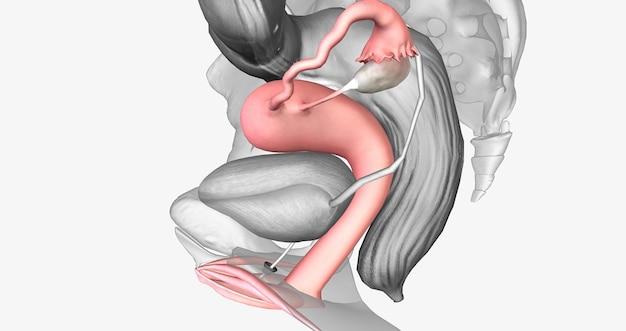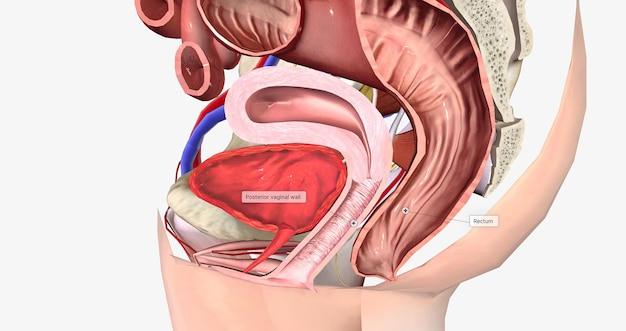Have you ever thought about how the different systems in our bodies work together? Well, one fascinating area to delve into is how the reproductive system collaborates with other systems to ensure the continuation of life. From the intricate coordination between hormones and the cardiovascular system, to the support from the immune system, the human body is a masterpiece of collaboration.
In this blog post, we will explore the various ways in which the reproductive system interacts with other systems. We’ll also shed light on some common questions like the advantages and disadvantages of asexual reproduction, diseases associated with the reproductive system, and much more. So, let’s dive in and unravel the captivating connections between the reproductive system and the rest of our amazing body!

How Does the Reproductive System Team Up with Other Systems?
The reproductive system may be the star of the show when it comes to perpetuating the human species, but let’s not forget that it doesn’t work in isolation. Our brilliant biological design ensures that the reproductive system collaborates with other systems in the body to keep everything running smoothly. So, let’s take a closer look at how our reproductive system joins forces with its fellow bodily systems, shall we?
The Intimate Dance with the Endocrine System
When it comes to regulating the reproductive system, one major partner in crime is the endocrine system. The endocrine system is like the body’s personal messaging service, using hormones as little couriers to relay crucial information. In the case of reproductive health, hormones like estrogen and progesterone take the lead.
These hormones, produced primarily by the ovaries in females and the testes in males, work their magic on different parts of the reproductive system. Estrogen, for example, is responsible for developing and maintaining female sexual characteristics. It helps the uterus prepare its cozy lining for a potential baby and regulates the menstrual cycle.
Meanwhile, progesterone steps in after ovulation, maintaining the uterine lining and ensuring it remains hospitable for a fertilized egg. So, the reproductive system gladly accepts support from the endocrine system to keep the baby-making machinery in tip-top shape.
Bridging the Gap with the Nervous System
Ah, the nervous system, the ultimate conductor of our bodily symphony. It plays a significant role in the reproductive system’s performance as well. You see, the brain and the reproductive organs are in constant communication, coordinating the intricate dance of fertility.
The hypothalamus, a tiny but powerful region in the brain, releases a hormone called gonadotropin-releasing hormone (GnRH). This hormone acts as the conductor’s baton, orchestrating the release of luteinizing hormone (LH) and follicle-stimulating hormone (FSH) from the pituitary gland.
LH and FSH are like matchmakers for the reproductive system, stimulating the production of sex hormones, triggering ovulation in females, and facilitating the production of sperm in males. Without the finely tuned coordination from the nervous system, our reproductive system might just be out of sync.
Muscles Muscling In: The Reproductive System Meets the Muscular System
Now, let’s not overlook the important contribution of the muscular system to the reproductive system’s success. During sexual intercourse, various muscles team up to lend a helping hand (or other body parts) to the cause.
For males, the smooth muscles in the penis undergo a bit of a transformation. They relax to allow blood to rush in, leading to that oh-so-essential erection. When it’s time for the grand finale, those same muscles contract rhythmically, helping to transport sperm through the urethra.
In females, the muscular walls of the vagina and uterus work in harmony too. During orgasm, both these areas experience contractions, intensifying pleasure while potentially aiding the movement of sperm toward the egg. So, you see, the muscular system knows how to flex its impressive skills to support the reproductive system.
Circulatory System: Delivering the Goods
Last but certainly not least, we have the circulatory system joining forces with the reproductive system. This system acts as a reliable delivery service, bringing oxygen and nutrients to the reproductive organs. It also helps to remove any waste products.
The circulatory system ensures that hormones produced in the endocrine system reach their intended destination. As these hormones travel through the bloodstream, they make their way to the reproductive organs, playing their part in regulating fertility and maintaining reproductive health.
Without the circulatory system’s efficient transport network, our reproductive system would be left waiting for important supplies, leaving us in a world with fewer baby giggles and little footsteps.
Teamwork Makes the Dream Work
There you have it! The reproductive system and its trusty partners, the endocrine, nervous, muscular, and circulatory systems, team up to create a harmonious symphony of fertility. From hormones to contractions, messages to muscle movements, and nourishment to delivery — these systems work together like a well-oiled machine to ensure the continuation of our species. It’s a collaboration worth celebrating, all thanks to Mother Nature’s ingenious design!

FAQ: How Does the Reproductive System Work with Other Systems?
What does reproductive age mean
Reproductive age refers to the period in a person’s life when they are able to reproduce. In females, this typically starts with the onset of menstruation, usually around the ages of 12 to 14, and lasts until menopause, which occurs around the ages of 45 to 55. For males, reproductive age begins with the production of sperm during puberty, usually between the ages of 12 to 16, and continues throughout their adult life.
Which of the following is an advantage of asexual reproduction
One advantage of asexual reproduction is the ability to produce offspring without the need for a mate. This allows organisms to rapidly increase their population size and colonize new environments. Additionally, asexual reproduction can be more efficient than sexual reproduction, as there is no need to invest time and energy in finding and attracting a mate.
What diseases are associated with the reproductive system
There are several diseases and conditions associated with the reproductive system. Some common examples include sexually transmitted infections (STIs) such as chlamydia, gonorrhea, and human papillomavirus (HPV); reproductive cancers such as breast, ovarian, and prostate cancer; and conditions like infertility, endometriosis, and erectile dysfunction.
What are the four systems that work with the circulatory system
The circulatory system works closely with several other systems in the body to ensure proper functioning. These include:
-
Respiratory System: The circulatory system transports oxygen from the lungs to all parts of the body and carries carbon dioxide, a waste product of cellular respiration, back to the lungs for elimination.
-
Digestive System: The circulatory system absorbs nutrients from the digestive tract and delivers them to cells throughout the body. It also removes waste products generated by the digestive process.
-
Endocrine System: The circulatory system helps distribute hormones produced by the endocrine glands to their target organs and tissues, regulating various bodily functions and processes.
-
Urinary System: The circulatory system transports waste products, such as urea and excess electrolytes, from the kidneys to be excreted in urine.
Which is not considered as an advantage of asexual reproduction
One advantage of asexual reproduction is the ability to produce offspring that are genetically identical to the parent. This can be advantageous in a stable and unchanging environment, as it ensures the preservation of favorable traits. However, one disadvantage of asexual reproduction is the lack of genetic diversity, which makes organisms more susceptible to environmental changes and less adaptable to new conditions.
What are two disadvantages of asexual reproduction
Two disadvantages of asexual reproduction are:
-
Lack of Genetic Diversity: Asexual reproduction produces offspring that are genetically identical to the parent, which limits their ability to adapt to changing environments or overcome new challenges.
-
Increased Susceptibility to Disease: Since asexual reproduction does not involve genetic recombination, there is little variation in the offspring’s immune system. This makes them more vulnerable to diseases and infections, as they lack the diverse set of immune responses that sexual reproduction provides.
What do all types of asexual reproduction have in common
All types of asexual reproduction involve the production of offspring without the involvement of gametes (sex cells). Instead, they rely on the replication and division of somatic cells (body cells). This results in offspring that are genetically identical or very similar to the parent organism.
What animals can reproduce without a mate
Several animal species have the ability to reproduce without a mate through a process called parthenogenesis. This includes certain reptiles, like the Komodo dragon and some species of lizards, as well as some insects, such as bees and ants. Interestingly, even some sharks and birds have been known to engage in a form of asexual reproduction under certain circumstances.
What are two types of reproduction
There are two primary types of reproduction:
-
Sexual Reproduction: This is the most common form of reproduction in higher organisms. It involves the fusion of gametes (sperm and egg) from two parents, resulting in offspring that inherit a mix of genetic material from both parents. Sexual reproduction allows for genetic diversity and variation, increasing the chances of survival and adaptation.
-
Asexual Reproduction: Asexual reproduction involves the production of offspring without the need for a mate. This can occur through various mechanisms such as binary fission, budding, or fragmentation. Asexual reproduction produces offspring that are genetically identical or very similar to the parent and does not involve the recombination of genetic material.
How does the reproductive system work with other systems
The reproductive system works in close coordination with several other systems in the body to ensure successful reproduction. This coordination involves the following:
-
Endocrine System: Hormones produced by the endocrine glands, such as estrogen and testosterone, regulate the development and function of the reproductive system.
-
Nervous System: The nervous system plays a role in regulating sexual behavior and arousal through the release of neurotransmitters.
-
Circulatory System: The circulatory system carries hormones and nutrients to the reproductive organs, ensuring proper functioning and development.
-
Urinary System: The urinary system helps eliminate waste products, including metabolic byproducts and excess hormones, to maintain a healthy reproductive environment.
-
Muscular System: Muscles in the reproductive organs aid in sexual activity and facilitate the movement of gametes during reproduction.
By working together, these systems ensure the production of functional gametes, the development of reproductive organs, successful fertilization, and the growth and development of offspring.
